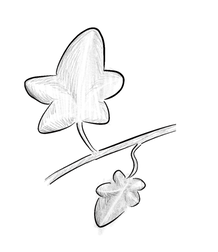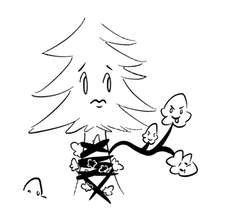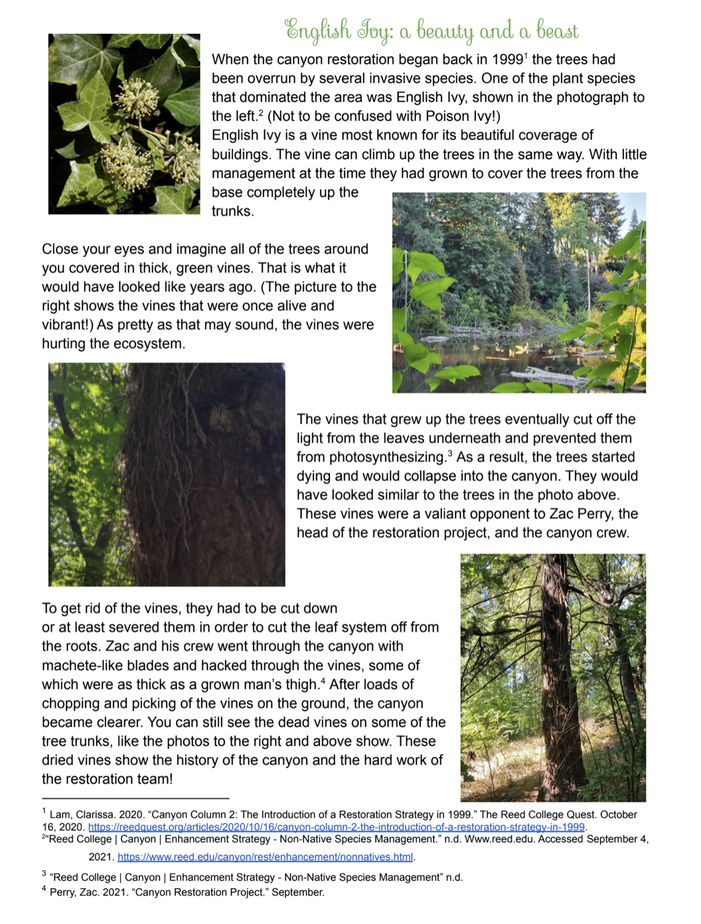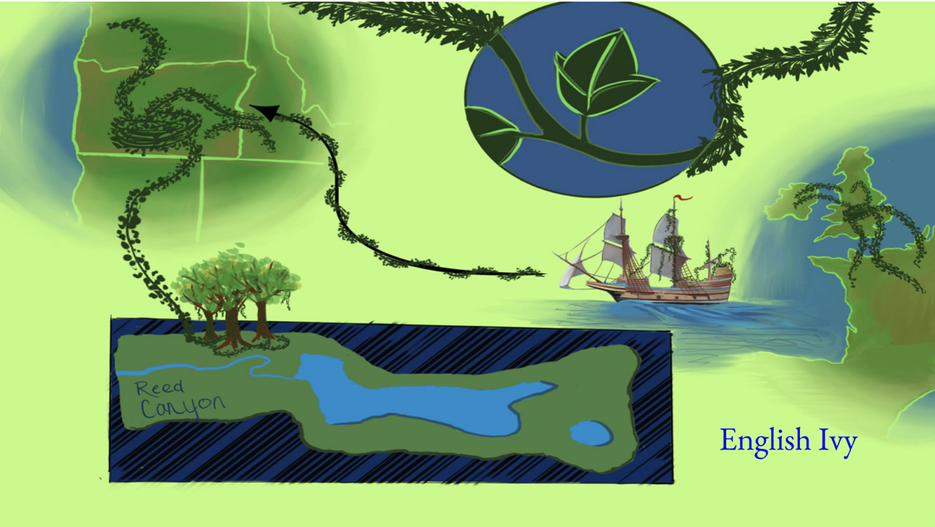ENGLISH IVY
ENGLISH IVY

Ivys are a kind of plant known as Lianas, which are plants that climb up trees or other vertical surfaces to get sunlight. Their vines are woody and tough. The English Ivy is an invasive species to the Pacific Northwest and over the last 20 years there has been a massive effort to get rid of it in Reed canyon.

English Ivy grows both on the forest floor and up trees into the canopy and once it has enough light, spreads outwards from the host tree and grows berries which are eaten by birds who spread the ivy seeds further.

Having Ivy in our forests where it is not native to is dangerous for the natural ecosystem. The ivy takes up sunlight and space from the trees and the foliage below. Even just the weight of Ivy on trees can cause them to fall down during storms.

Reed Canyon has gone through a massive change in the last 20 years in order to restore it to a more natural state. Part of this effort has been gettin rid of the English Ivy that was threatening trees and taking up space from native plants. You can see on some trees the remains of the ivy that was cut around the base of the tree, leaving the vines higher up to die. This leaves the woody vines on the tree but the ivy is no longer growing and it’s spread is stopped. Try and spot these trees around the canyon!
If you are interested in the efforts to remove Ivy from Portland forested areas, check out the No Ivy League at portland.gov/parks/nas/noivy. They do work clearing out invasive English Ivy and accept volunteers of all ages.
Works Cited
(1) Liana. Wikipedia; 2021.
(2) English Ivy (Hedera helix) https://www.invasive.org/alien/pubs/midatlantic/hehe.htm (accessed 2021 -09 -02).
(3) No Ivy League https://www.portland.gov/parks/nas/noivy (accessed 2021 -09 -02).
(4) Reed College | Canyon | Home https://www.reed.edu/canyon/index.html (accessed 2021 -09 -02).
Hedera Helix, more commonly known as English Ivy, is an evergreen perennial vine that is native to Europe and Northern Africa. In its juvenile form English Ivy has leaves with three to five lobes. In its mature form the ivy has a thick woody stem and its leaves have no lobes. Nowadays these plants can be found, not only in their native homeland but also throughout the Americas, invading foreign ecosystems and disrupting the natural balance within them. How did this come to be? Well, it's important to note that English Ivy is a hearty plant that is well suited
to live in a variety of differing environments. This plants knack for survival is most likely what led to its transport across the Atlantic Ocean. Early European settlers first introduced English Ivy to the Americas because they brought it on their ships as an ornamental addition to their travels. Once there, the plant took a firm hold on the American continent and began to spread. The settlers aided the further spread of this plant by buying, selling and transporting it all over the United States which allowed it to put down roots on the west side of the American continent as well. English Ivy was also commonly used to fight against soil erosion despite having shallow roots with the majority of its body existing above ground. It had no natural enemies in its new environments and was thus able to spread out of control resulting in what are often referred to as Ivy deserts. The Ivy would cover every inch of the soil’s surface which starved the native vegetation of sunlight and nutrients. That is what Zac Perry walked into in 1999 when he first took on the Reed College Canyon Restoration project. Clearing out the suffocating Ivy has been a major part of the restoration that has led to the Reed Canyon that we enjoy today. But even now, English Ivy can be found in abundance in some parts of the canyon, reminding us that the restoration project is still ongoing and a much needed facet of the Reed College community.
Citations
Zac Perry presentation and Tour
Vines. English Ivy (Hedera helix). (n.d.). https://www.invasive.org/alien/pubs/midatlantic/hehe.htm.
College, R. (n.d.). Reed college. Reed College | Canyon | Canyon Resources.
https://www.reed.edu/canyon/reso/index.html.
to live in a variety of differing environments. This plants knack for survival is most likely what led to its transport across the Atlantic Ocean. Early European settlers first introduced English Ivy to the Americas because they brought it on their ships as an ornamental addition to their travels. Once there, the plant took a firm hold on the American continent and began to spread. The settlers aided the further spread of this plant by buying, selling and transporting it all over the United States which allowed it to put down roots on the west side of the American continent as well. English Ivy was also commonly used to fight against soil erosion despite having shallow roots with the majority of its body existing above ground. It had no natural enemies in its new environments and was thus able to spread out of control resulting in what are often referred to as Ivy deserts. The Ivy would cover every inch of the soil’s surface which starved the native vegetation of sunlight and nutrients. That is what Zac Perry walked into in 1999 when he first took on the Reed College Canyon Restoration project. Clearing out the suffocating Ivy has been a major part of the restoration that has led to the Reed Canyon that we enjoy today. But even now, English Ivy can be found in abundance in some parts of the canyon, reminding us that the restoration project is still ongoing and a much needed facet of the Reed College community.
Citations
Zac Perry presentation and Tour
Vines. English Ivy (Hedera helix). (n.d.). https://www.invasive.org/alien/pubs/midatlantic/hehe.htm.
College, R. (n.d.). Reed college. Reed College | Canyon | Canyon Resources.
https://www.reed.edu/canyon/reso/index.html.



